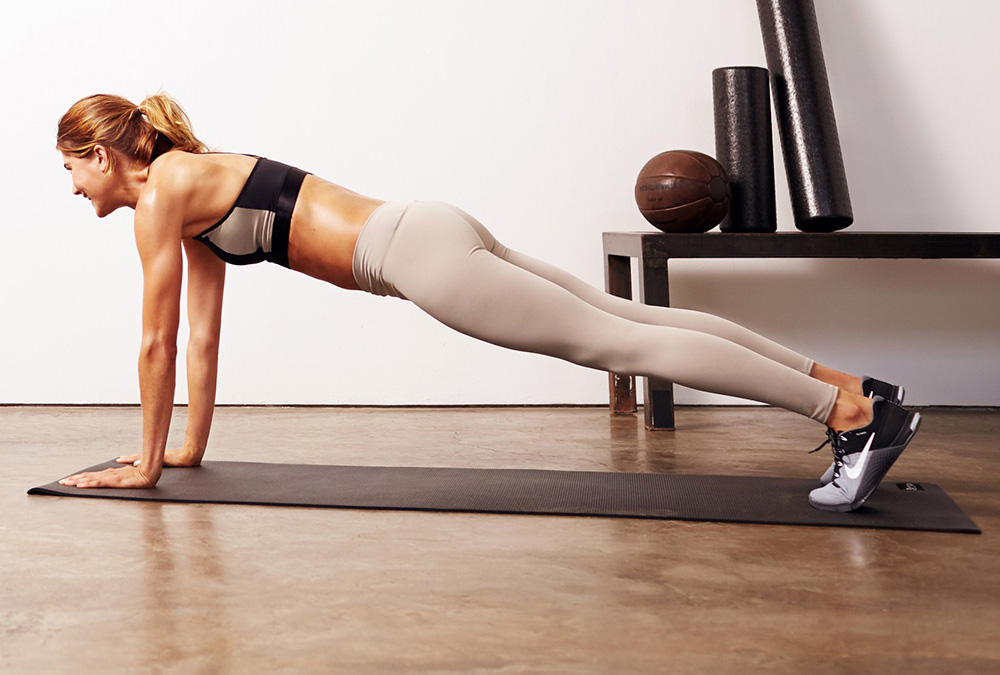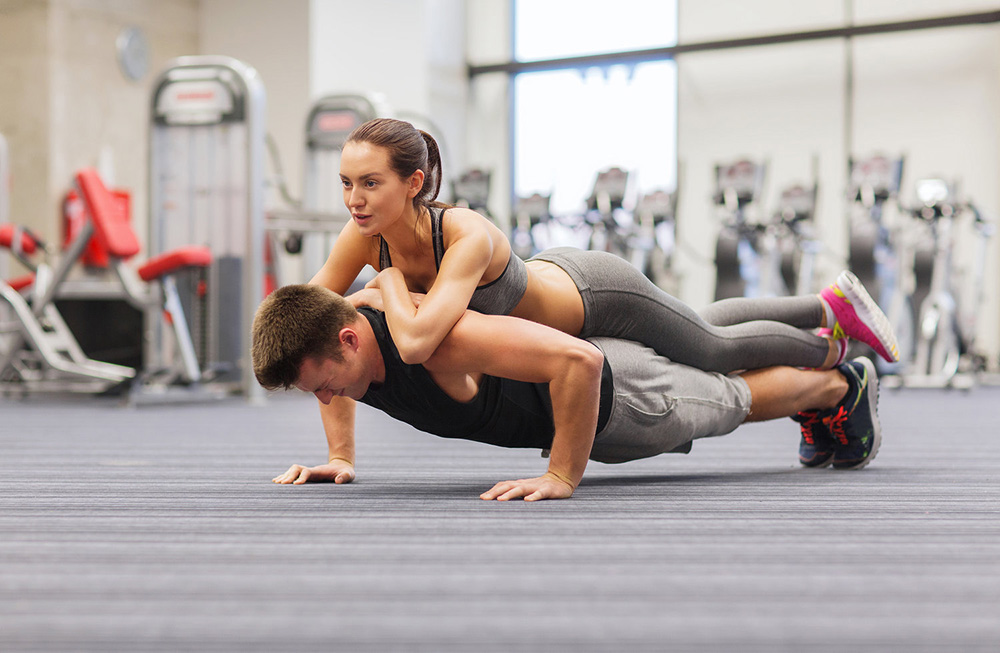Struggling with wrist pain during push ups is a common problem. If you are experiencing it as well, then you should probably check your form to make sure it’s correct. Usually, the pain is coming from the unnecessary pressure you put on your wrists because of errors in your form. If your posture, however, is proper, there are several steps you can take to modify each push up and prevent pain.

Dealing with wrist pain during push ups
First, let’s talk a little bit about preparing for your workout and your form while doing push ups. If you follow these short and simple instructions, you will make sure that you are all warmed up before starting and that your form is perfect while doing the push ups. This will prevent all types of wrist pain caused by two common mistakes that all beginners make. Also, you might want to get some wrist support gloves for push ups. They will protect your wrists while you try to figure out what’s the best way to perform this exercise.
1. Warm up
If you are planning to complete a series of push ups, then you should probably add an extra warm up to your daily routine. Focus on your wrists and hands to make sure they are ready for the upcoming workout. Perform small and circular movements at the joint, using full range of motion.
2. Hand position
Be extremely careful when you are getting into position for the push ups. Your hands, placed firmly on the ground, should be facing forward. Also, your wrists should be directly under your shoulders.
3. Elbow movement
If you flare your elbows out to the sides of your body, instead of keeping them close and bending against your body, sooner or later you will start experiencing unwanted side effects. It takes time to master this compound movement, but you’ll get there.
4. Core
Contrary to popular belief, push ups are not just an upper body exercise. If you are not engaging your entire core while doing the push up, the extra pressure on your wrists will inevitably lead to pain, and quite possibly an injury.
Having said that, the list above covers all you need to know about keeping perfect form when doing the push-ups; this will help you avoid pain, while at the same time making the entire exercise much more effective.
Still can’t do push ups because of wrist pain? If none of this is working, then the problem could be located elsewhere. Our bodies are unique, so doing every exercise by the book is never an option. Sometimes we need to improvise a bit in order to adapt the exercise to our body and protect ourselves from an injury. So, here is a list of common questions – how to strengthen wrists for push ups? How to modify each move so you are not experiencing that extra pressure? How to progress from a modified version to a proper push-up? How to prevent wrist pain if you want to work on your upper body?
How to prevent wrist pain

Here are several ways you can approach the standard push up in order to prevent wrist pain:
1. Roll your wrists
Wrist-rolling push ups are easier, but you’ll need some time to adapt to the variation, so take things slowly. Start on all fours and gradually move your knees further until you reach the classic form. This type of push up will strengthen your wrists, prevent future wrist pain from doing regular push ups.
2. Distribute your weight away from your wrists
Try to distribute your weight to your fingertips. Keep your palm flat and push into the floor with your fingertips. Make sure your fingers are also flat, because if they are curled, you can injure your finger joints. When the muscles on your palms are chipping in and doing their part, the entire exercise becomes easier.
3. Change the position of your body
Try to elevate your upper body to naturally decrease the weight that falls on your hands and wrists. This is a perhaps the best preparation for doing a classic push-up. You may try to perform a series of push ups by putting your hands on a bench. Keep in mind that your form must be perfect during this variation or you can easily injure yourself. Core strength plays a vital role in maintaining stability, so make sure to work on your abdomen simultaneously. If a modified surface doesn’t do you any good, then perhaps look for a pair of push up parallettes.
Wrist pain from push ups can be very annoying, and at the same time restrictive or even crippling. If your form is perfect, and the push up variations are not helping, then you might want to try some type of push up alternatives to protect the health of your wrists. Some of this alternatives are as effective as the push ups when it comes to toning your arms, shoulders, chest, core and legs, so it’s a win-win situation.
Pull up bars are probably the best push ups alternatives for developing a strong upper body. Because of the pull movement, you can train your wrist without putting extra pressure. Other exercises you may want to try are:
- Resistance Band Chest Presses
- Reclined Chest Presses
- Bear Crawls
- Forearm Plank
- Chest Flyes on a Stability Ball
If you are willing to try something completely different, before you strengthen your arms and wrists, then how about yoga and pilates exercises? You might want to give programs like PIYO a chance! It’s a low impact workout, so your wrists won’t have to endure any kind of stress while you exercise. You can work out from the comfort of your home, improving core strength, stability, control and endurance.
The wrist pain still persists? Then you should probably consult a physician to make sure there isn’t some kind of a wrist injury from push ups.
Medical causes of wrist pain during push ups

Carpal tunnel syndrome (CTS) is a common medical condition that can cause wrist pain during push ups. It happens due to compression of the median nerve as it travels through the wrist at the carpal tunnel. The main symptoms include: pain, numbness, and tingling, in the thumb, index finger, middle finger, and the thumb side of the ring fingers.
CTS is most common among obese people, those who have repetitive wrist work, pregnant woman and patients with rheumatoid arthritis. But, in our modern way of living (read: always holding your smartphone or tablet in your hands), almost everyone is at risk. So if you have any suspicions that you might suffer from CTS, you should consult a physician immediately. Diagnosis is being made based on signs, symptoms, and tests.
Another medical condition that can be linked with wrist pain during push ups is tendinitis (also tendonitis). It’s a tendon injurie accompanied by inflammation. Tendinitis is common in the upper shoulder and lower section of the elbow. All athletes are in risk, so if you have any suspicion, just like with the CTS, consult your physician immediately.
Have you ever experienced wrist pain from doing push ups? How did you deal with it? Share your experience with us here at Lifestyle Updated in the comment section bellow.